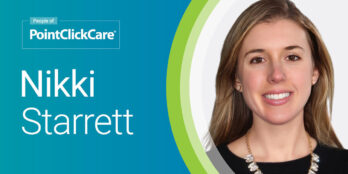
Pre-admission Matters – Because it Matters With PDPM
 3 min
3 min
Innovation, PDPM, Skilled Nursing
It’s coming — like it or not — but PDPM is coming. And it’s not only changing the way we need to think about our resident population, it’s also changing when we need to think about them and the timing of the information we need.
PDPM fundamentally changes the way we look at residents. The move from volume to value isn’t just about saving money — it is about ensuring that we put the person in the driver’s seat. It is about care delivery truly being a partnership between the home health care givers, the resident, and their support system. It’s about clearly identifying the individuals needs, strengths, and preferences. Ultimately, we have until Day 8 to have all of that captured in the record in order to get reimbursed for the care we have and will provide. Now, with a single payment assessment driving payment for the entire stay, it is more important than ever to have a clearly defined, well-executed plan for getting the right information to the right people as soon as possible.
In the past, RUGs reimbursement forced skilled nursing facilities to concentrate on the number of minutes of therapy we needed to provide in order to optimize reimbursement. Now, with PDPM we need to focus on the comprehensive clinical characteristics of the resident — and starting that process upon admission may not provide adequate time to get that full picture captured and in the chart for the single 5-day payment assessment. Now, with more emphasis and payment tied to understanding not only their primary reason for being in the home, but also all of those co-morbidities that affect their health and perception of wellness, there is more of a need to connect differently with potential residents. Creating this connection enables us to get a better idea of the information that needs to be entered in the record in order to support optimal reimbursement and understand the resources and needs of the individual to prepare staffing and medical resources. In my opinion, this new method is putting the skilled back in skilled nursing. With this change we need to be more thoughtful and purposeful in getting what we need to be able to achieve the resident’s goals for care and support in harmony with the overall revenue targets for the facility.
At one time, before census was a struggle and before we “only” took rehab patients — we connected with potential residents — we sent people to the hospital to get to know the person and make sure it was the right admission for the facility and the individual. We understood what we needed for that person and how their admission would contribute to the quality mix in the home. I have often heard that homes feel they just can’t find the time to make that effort anymore since rehab gets them paid without having to know more. On October 1st, 2019, all this will change. Saving us about 183 hours of assessment time annually, PDPM will give us that time to refocus on the skilled part of the care. Homes can now reinvest time that would have been spent on managing assessments and schedules into a better pre-admission process. By utilizing time savings and technology, homes can get better information sooner and ensure they are getting the right reimbursement with a comprehensive view of the resident required by Day 8. With this new process, you don’t have to find time to improve your admission process, PDPM has already given it to you.
February 18, 2019





